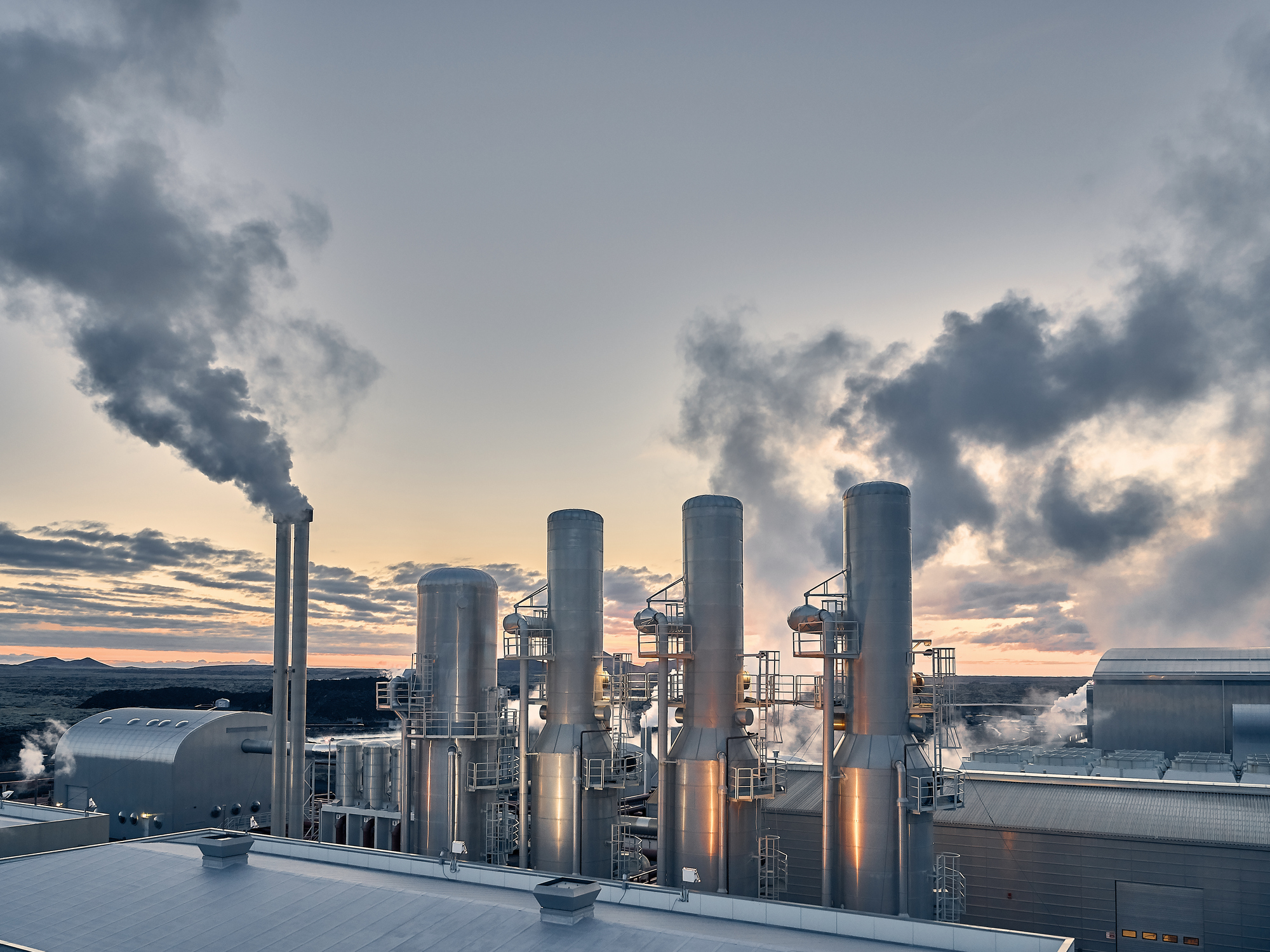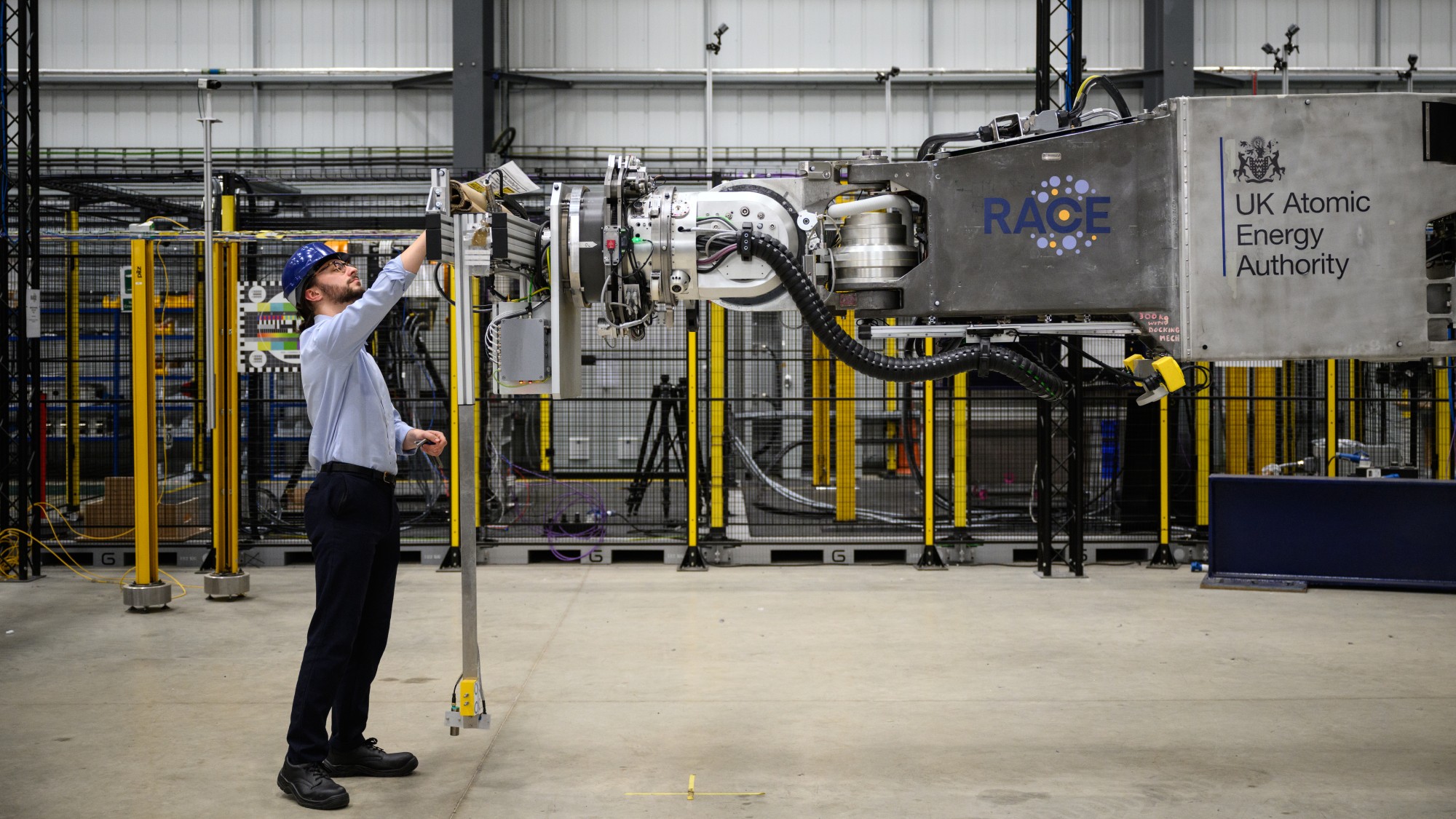Could heat from the Earth's crust be used to remove carbon from the atmosphere?


In the fight against climate change, carbon capture technology, where carbon dioxide is sucked out of the atmosphere, has become an increasingly hot topic. However, the most significant drawback of the technology is the energy required, reports The Washington Post.
Despite carbon dioxide's effect on climate change, the greenhouse gas only makes up 0.04 percent of ambient air, making its extraction very energy intensive and challenging. The entire capture process would be futile if it required energy from greenhouse gases to operate.
Fervo Energy, a company based in Houston, Texas is hoping to harvest geothermal energy from Earth's crust. Drilling just one to two miles below the earth's crust can provide access to temperatures over 1,000 degrees Fahrenheit where water can be pumped and converted to steam-powered electricity, the Post continues. "You have to have your energy from a carbon-free source," said Timothy Latimer, the CEO of Fervo Energy. "Geothermal is a great match."
The Week
Escape your echo chamber. Get the facts behind the news, plus analysis from multiple perspectives.

Sign up for The Week's Free Newsletters
From our morning news briefing to a weekly Good News Newsletter, get the best of The Week delivered directly to your inbox.
From our morning news briefing to a weekly Good News Newsletter, get the best of The Week delivered directly to your inbox.
Geothermal plants can both produce electricity and be used to capture carbon because electricity production always leaves residual heat at approximately 212 degrees, ideal for capturing carbon. "It's a totally unexplored place," Latimer said. "What would you do differently in the design of a geothermal power plant if you knew you were pairing it with a direct air capture facility?"
Scientists from the Intergovernmental Panel on Climate Change have emphasized how carbon capture will be needed to meet climate coals, predicting that ten gigatons per year of carbon need to be removed per year through 2050, and even more after. "We are not waiting for the year 2100. We are not waiting for the year 2050," said Philip Jakpor, director of programs nonprofit Corporate Accountability and Public Participation Africa. "We believe the time for action should be now."
A free daily email with the biggest news stories of the day – and the best features from TheWeek.com
Devika Rao has worked as a staff writer at The Week since 2022, covering science, the environment, climate and business. She previously worked as a policy associate for a nonprofit organization advocating for environmental action from a business perspective.
-
 How climate change is affecting Christmas
How climate change is affecting ChristmasThe Explainer There may be a slim chance of future white Christmases
-
 Blue Origin launches Mars probes in NASA debut
Blue Origin launches Mars probes in NASA debutSpeed Read The New Glenn rocket is carrying small twin spacecraft toward Mars as part of NASA’s Escapade mission
-
 Why scientists are attempting nuclear fusion
Why scientists are attempting nuclear fusionThe Explainer Harnessing the reaction that powers the stars could offer a potentially unlimited source of carbon-free energy, and the race is hotting up
-
 Dinosaurs were thriving before asteroid, study finds
Dinosaurs were thriving before asteroid, study findsSpeed Read The dinosaurs would not have gone extinct if not for the asteroid
-
 Canyons under the Antarctic have deep impacts
Canyons under the Antarctic have deep impactsUnder the radar Submarine canyons could be affecting the climate more than previously thought
-
 SpaceX breaks Starship losing streak in 10th test
SpaceX breaks Starship losing streak in 10th testspeed read The Starship rocket's test flight was largely successful, deploying eight dummy satellites during its hour in space
-
 NASA is moving away from tracking climate change
NASA is moving away from tracking climate changeThe Explainer Climate missions could be going dark
-
 Rabbits with 'horns' sighted across Colorado
Rabbits with 'horns' sighted across Coloradospeed read These creatures are infected with the 'mostly harmless' Shope papilloma virus



